From shopping bag ads to fake vending machine experiences, brands are always looking for creative ways to reach consumers. The latest trend? Corporate branding displays so massive that they are visible from outer space.
Savvy companies are leveraging large-scale outdoor banners and branded solar panels to display their messaging to airline passengers and satellite map users. What began as a novelty trend has now become a proven corporate branding strategy.
With over 1 billion monthly users on Google Maps alone, space-visible ads present a unique opportunity to capture interest and attention. Let’s explore some of the most creative and audacious branding campaigns that take marketing to new heights – literally!
A Brief History of Satellite Images
The roots of satellite imagery trace back to the Cold War era. During this time, aerial spy photography was a valued reconnaissance tool, as seen during the Cuban Missile Crisis. However, high-resolution images only became publicly accessible after the year 2000 when commercial satellite companies began selling photos to software developers.
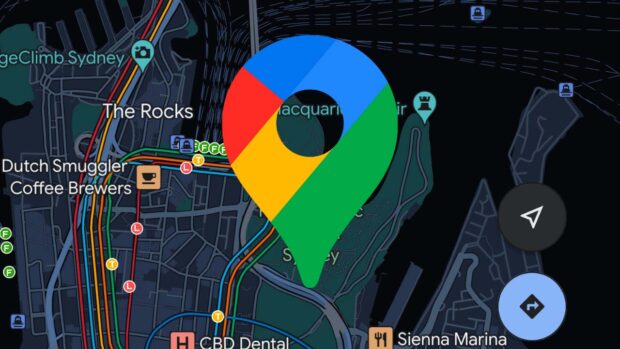
Danish tech entrepreneurs Lars and Jens Eilstrup Rasmussen recognized this new opportunity. Their company Where 2 Technologies purchased satellite images and pioneered easy-to-use navigation software. Google acquired the start-up in 2004, laying the foundation for Google Earth in 2005 and Google Maps shortly thereafter.
Once a novel concept, browsing locations using satellite maps is now mainstream. Popular GPS navigation apps like Google Maps and Apple Maps, give users the option to view satellite maps. Naturally, brands want in on the action. Placing logos on the rooftops of corporate buildings gives companies a new opportunity to get their logos seen by millions. Is roofvertising a word yet?
Maxim Magazine Heats Up the Desert With Eva Longoria

One of the earliest examples of a brand using satellite maps for a marketing stunt is Maxim Magazine. To promote its 100th issue in 2006, the publication created a larger-than-life Eva Longoria billboard in the Nevada desert. Spanning over 75 x 110 feet, the risque design was impossible to miss from the sky. Across the top of the giant magazine in the desert read, “The only magazine big enough to be seen from space.”
This bold move got other marketers thinking about creating ads targeted to people browsing platforms with access to satellite imagery, like Google Maps.
KFC’s Face From Space Spices Up the Skyline
In 2006, KFC took their campaign to promote Colonel Sanders to new heights – literally. The company designed a giant 65,000-square-foot logo in the Mojave Desert visible only to planes and orbiting satellites… and maybe UFOs too. The location was near Area 51.
While only temporary, this PR stunt generated buzz and showed how brands could creatively hijack the skies.
Tesla Uses Rooftop Solar Panels To Spell T-E-S-L-A
In January 2022, Tesla began installing solar panels on the roof its new Gigafactory, just northeast of the Austin-Bergstrom International Airport.
Initially, the company appeared to be randomly placing solar panels on the roof of the massive building, which sits on 2,400 acres of land. This was likely done on purpose to postpone the reveal that eventually emerged… the letters T-E-S-L-A.
For airline passengers flying in and out of Austin, it’s an unmistakable reminder of the brand’s renewable energy leadership and innovation.
X Marks The Spot At SpaceX’s California Headquarters
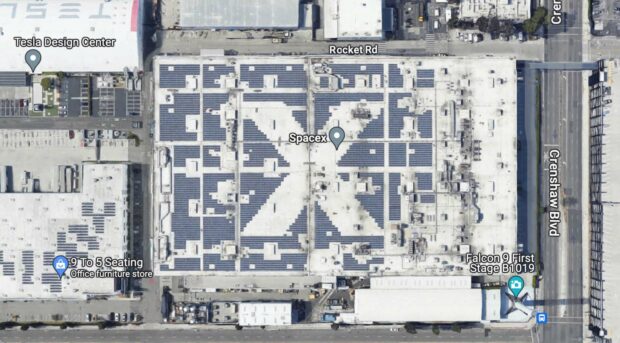
Like Tesla, Elon Musk’s SpaceX also embraces solar customization at its California headquarters. The rooftop array is configured to use negative space to display a massive “X” representing the company’s name.
Comcast’s Giant Floating Solar Panel Array
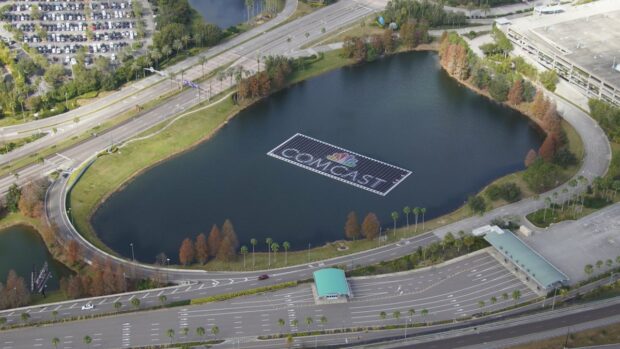
At Universal Orlando Resort, Comcast installed a giant floating solar array that proudly showcases their combo logo with the NBC peacock. Beyond building brand awareness, the display highlights NBC and Comcast’s commitment to renewable energy.
The floating solar panel barge made its debut in January 2021. You can browse a satellite image of the lake from September 2022 using this link.
Miami International Airport’s Floating Solar Farm
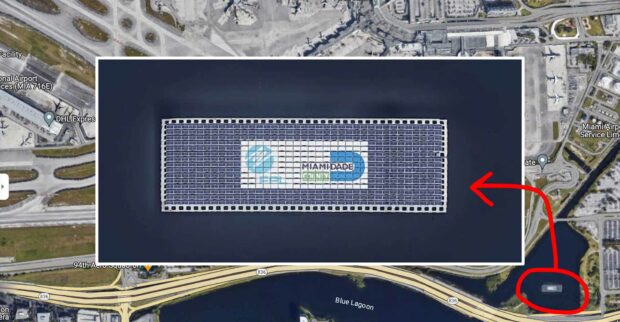
Similar to the Comcast installation, there’s a floating solar farm on the Blue Lagoon lake by MIA airport. The unimpressive branding on the solar panels is for the project’s backers, FPL and Miami-Dade County.
If they were smart, they would have sold a sponsorship for the solar panels. With millions of visitors traveling through Miami International Airport every month, it’s a valuable piece of branding real estate.
The Mickey Mouse Walt Disney World Solar Farm
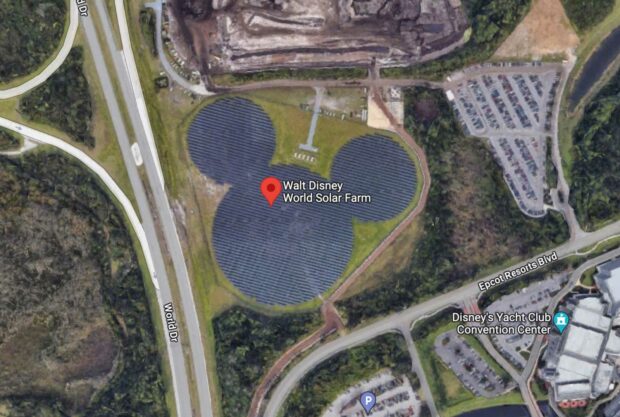
In late 2016, Disney World began building one of the a most playful takes on solar personalization. A solar farm at their Epcot theme park arranged the panels in the unmistakable shape of Mickey Mouse’s head and signature ears.
This vibrant display generates clean electricity for the park while spreading smiles across guests’ faces. It also demonstrates Disney’s dedication to sustainability with plans to increase the use of solar energy at their parks.
How Giant Billboards And Solar Panels Became Ad Space
What began as a novelty with billboards in the desert has evolved into an art form and a common consideration when designing solar panels. Companies now think beyond simply arranging solar panels to maximize sunlight. Instead, they are also now choreographing panel layouts and overlaying imaginative designs that display corporate branding.
With satellite imagery now mainstream, space-visible branding offers unmatched visibility. As rooftop solar power continues to gain popularity, organizations can now leverage their arrays as marketing tools. Done right, it shows commitment to renewable energy in an unforgettable way.
Just look out the window next time you fly, or explore your destination the next time you use a GPS app like Apple Maps for directions – you never know what creative, corporate, marketing message you might see.
The Next Frontier In Corporate Branding: Giant Logos For Satellite Maps ... #GoogleMaps #SatelliteMaps Share on X
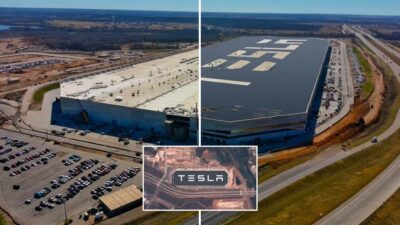
 30 Ideas On What To Write In A Boss’s Christmas Card
30 Ideas On What To Write In A Boss’s Christmas Card
Leave a Reply
You must be logged in to post a comment.